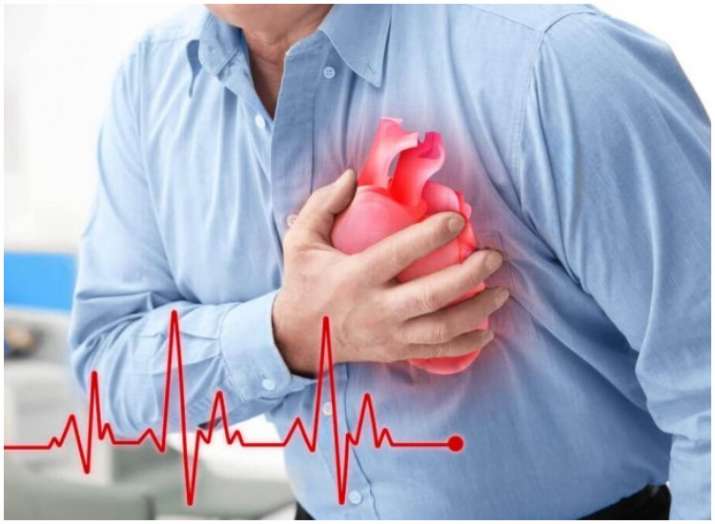

: Admin : 2020-06-05
With the COVID-19 curve that is unlikely to flatten any time soon considering the number of rising cases, India moved into its fourth lockdown extension. And the possibility of further extension has not been ruled out. The omnipresent deadly virus has changed the patient care scenario at hospitals all over the world. However, it is imperative that, in trying times like these, people do not overlook and are more vigilant about other health conditions or diseases. Among them is stroke which is one of the devastating and disabling diseases and is the leading cause of morbidity and mortality in India.
It is suggested if you notice any symptoms such as sudden weakness or numbness in the face, arm, or leg, especially on one side of the body, trouble in speaking, seeing, and walking, among others, you rush to the nearest hospital without delay. While people are discouraged from visiting hospitals for minor ailments owing to the pandemic, stroke is an exception as it is an emergency and requires immediate medical assistance.
According to the Indian Stroke Association, 17 million people suffer a stroke each year of which six million die and five million remain permanently disabled. Additionally, eighty percent of stroke deaths occur in lower- and middle-income countries including India due to inadequate preventive and stroke management facilities. Stroke cases have surged due to various factors including sedentary lifestyle, hypertension, smoking and obesity.
Depending on the severity of stroke, the patient’s motor function, speech, and memory may get impacted. For severe cases, conventional treatment of strokes is a blood thinner but due to its side effects, people are now turning to technology. Dr. Subhash Chandra, Chairman, Department of Cardiology, B L Kapoor Centre For Cardiac Sciences & Hospital, New Delhi lists out everything you need to know about a stroke.
How does a stroke occur?
When blood flow is obstructed through either a blocked vessel in the brain (ischemic stroke) or a burst of the blood vessel in the brain (hemorrhagic stroke), a stroke occurs. Ischemic stroke is mostly caused by blood clots that form in the heart due to conditions like atrial fibrillation (AF) and birth defects like patent foramen ovale (PFO).
AF is a condition that involves irregular beating of the left atrium (upper chamber) of the heart, increases a person’s risk for stroke by four to five times when compared with the people who do not suffer from it. Studies have reported AF as a growing epidemic with an expected doubling of its prevalence in India by 2030. When suffering from this condition, blood clots are most commonly formed in a part of the heart called left atrial appendage (LAA). If a blood clot forms, it could dislodge from the heart and travel to the brain where it might block blood flow, causing a stroke.
Closing the LAA is an ideal way of reducing stroke risk in people with AF and that is what the new technology addresses. With the advancement in medical intervention, therapies to close the hole in the heart of the patients or PFO and LAA are performed to reduce the risk of recurrent stroke. For instance, a nail-like device called occluder is implanted inside the heart to permanently close the LAA to keep the blood clots from escaping.
Advancement in technology is helping to treat stroke
PFO and LAA closure therapies are used to reduce strokes in patients. It can also reduce the risk of bleeding associated with the use of blood thinners that have been used conventionally. Most people can take a blood thinner for years without a risk. But because they help prevent blood clots by thinning the blood, even tiny cuts or bruises will bleed a lot more because of the daily consumption of these drugs.
Today we have different kinds of occluders that can be placed in the heart to close the PFO or the LAA opening from a minimally invasive catheter procedure. The procedure involves making a small incision in the leg and inserting a small catheter to guide the occluder through the blood vessels to the heart. This device closes the opening in the heart, and it is inserted into the opening of the LAA, in the case of AF. This seals off the LAA and keeps it from releasing clots. A similar procedure is followed to close PFO. The device is released to remain permanently in the heart and all the catheters are removed to complete the procedure, when the cardiologist is satisfied with the positioning of the occluder. Heart tissue grows over the implant, with time, making the device a part of the heart. After the procedure, the patients can return to normal activities.
In the era of device technology, modern treatments of stroke have reached an advanced state of development. These developments are timely, occurring at a time when stroke incidence is on the rise. To manage stroke, recovery and rehabilitation are among the most important aspects. These include physical therapy, speech therapy and occupational therapy. As you follow social distancing, on onset of a stroke, do not forget the importance of golden hour and seek treatment at the earliest.
Disclaimer: This article is sourced from indiatvnews.com without any changes in the contents thereof. Only the title has been edited by Meddco.com The facts and the opinions appearing in the article do not reflect and describe views of meddco.com
Meddco stroke heart stroke diseases coronavirus COVID-19 pandemic corona virus coronavirus test COVID-19 test Coronavirus treatment COVID-19 treatment book appointment affordable treatment packages surgery packages doctor near me hospital near me hospitals doctors
No Comments